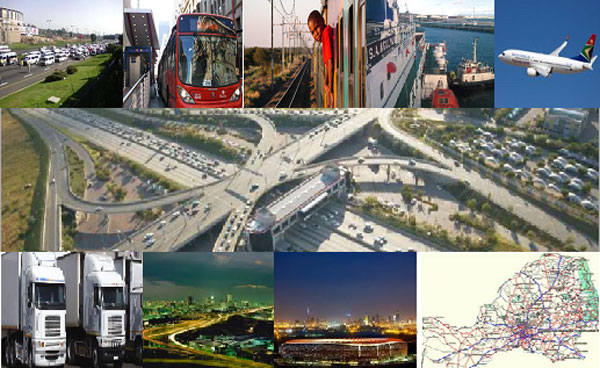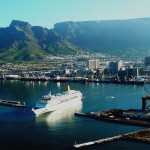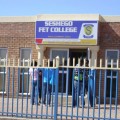Transport Minister Dipuo Peters has officially launched this year’s Transport Month, where she highlighted the on-going interventions to curb road carnage and the progress made by government on providing efficient and reliable public transport system.
Under the theme “Celebrating 20 years of delivering efficient, reliable and safe transport services”, Peters on Tuesday announced that in 2013/14 financial year, government intends to spend over R5 billion on 13 cities. It will be used on planning, building and operating integrated public transport networks, which she hoped will ease congestions on the roads.
Both Johannesburg and Cape Town, she said, have already constructed over 20km of dedicated bus lanes on which services are operated, supported by over 100km of complementary, feeder and distributor services.
The two cities will also expand Phase 1 Rea Vaya and My CiTi services to carry up to 100 000 passenger trips a day on each system which on average transport over 40 000 people to and from work daily.
Work in progress
The George municipality in the Western Cape, which has been labelled as the new entrant to the public transport network development enterprise, will complete its full city-wide network at a more modest scale than the networks being constructed in the metropolitan areas.
While Buffalo City, Ekurhuleni, Mangaung, Msunduzi and Polokwane will complete their public transport network development planning and service contract designs during the course of 2013/14 and will commence with network development in the 2014/15 financial year.
“We strongly view transport systems as vital to our way of life, connecting people with jobs, schools, shops, friends and family,” said Peters, adding government was developing a transport system that will serve as a “catalyst” for social and economic development.
She recommitted the government to reducing road fatalities by half before 2020, but said that there had to be tougher enforcement as more than 90% of road accidents occurred when traffic regulations were violated.
Public transport campaigns
Peters said her department is running several campaigns with special focus paid to public transport, considering that 80 percent of the population are dependent on public transport. The focus will not only be on heavy freight vehicles and public transport vehicles such as minibus taxis and buses but they will have a clear message of zero tolerance.
Other plans by the department includes heightening awareness of road traffic safety; increasing the detection and prosecution of critical traffic offences; and inculcating safe road user behaviour, and regulating driving schools among others.
Road accidents
Peters said the estimated R306 billion that is lost as a result of road accidents was too much.
“Behaviour that is inconsistent with the law must attract the necessary penalties…we are steaming ahead with our operations to rid our testing stations of corrupt practices.”
The minister added that there was an intergovernmental team of experts to investigate pragmatic and sustainable interventions aimed at curbing the high number of road accidents.
The team, which will work closely with provincials and municipal law enforcement agencies, comprises senior officials from the Department of Transport, the Road Traffic Management Corporation, the Road Traffic Infringement Agency, the South African National Roads Agency and the RAF.
Maintaining, upgrading of infrastructure
According to Peters, maintaining road infrastructure; upgrading the rail infrastructure and services and constructing and operating public transportation infrastructure, will be the main focus of the department this financial year.
The minister said government needs to spend R30 billion a year on just maintaining roads, but at the moment it can only spend R30 billion on both maintenance and new construction.
She said they are looking for better ways of financing and maintaining the country’s roads.
“Our economic growth depends on our ability to get goods. Hundreds of billions are being invested to expand and upgrade rail and harbours and airports
“Without these investments, we will not be able to export much more than we currently do and will not meet our economic growth targets.”
Rail infrastructure
With regards to rail, the department also has developed a comprehensive draft Green Paper on National Rail Policy which focuses on commuter and freight railway systems in the country and challenges facing the rail sector.
She said work is already underway transforming and modernising passenger railways through the New Rolling Stock Acquisition Programme.
Other projects in the rail sector include the construction work on the R1.3-billion, 3.5km new dual Bridge City rail link (BCRL), north of Durban which includes a bus and taxi interchange.
The new rail link, which is the largest rail infrastructure development project in the Durban area, is bridging the communities of Phoenix and Inanda, Ntuzuma and KwaMashu (INK) and linking them into the urban system.
A similar project is earmarked for the Moloto Corridor, which transports 35 000 commuters by 536 buses to Pretoria every day.
A feasibility study to be completed in March 2014 is underway, according to Peters.
Maritime sector
The department is also working on mobilising the maritime sector, organising its industries and drawing the attention towards what the sector can contribute to the achievement of government’s social and economic goals.
Peters said they are working on finalising the Maritime Transport Policy and fast tracking it through Parliament key legislation and Regulation with the view to reform the sector and create an effective regulatory environment.
The focus, she said, will be on increasing the number of qualified South African seafarers and ensuring that they are absorbed into employment, particularly the youth.
“During 2013-2014 we will be placing a concerted focus on the area of maritime education network development with a particular focus on expanding the network of Maritime High Schools offering maritime subjects in all provinces,” the minister said.
She further said they were also looking at increasing the number of Cadets Officers through the Cadetship Programme on the SA Agulhas from this year’s 109 to 200.
The South African Maritime Safety Authority (SAMSA) has sent 20 South Africans this September to study their Master’s Degree courses as well as two to study their Doctorates in Maritime Affairs at the World Maritime University in Sweden.
Civil Aviation
With regards to Civil Aviation, which Peters said was a major catalyst for global economic activities, trade and tourism, the minister reiterated that her department is committed to regional aviation safety, security and environment issues.
“Through the South African Development Community (SADC) and African Civil Aviation Commission (AFCAC) mechanism we will continue to work tirelessly to prevent an European Union (EU) blacklist of African States and a unilateral imposition of the EU-ETS (EU emissions trading system).”
O.R. Tambo International Airport serves as the main international air gateway into South Africa and the SADC region as it processes almost 19 million passengers and over 200 000 air traffic movements per annum and it also facilitates over 300 000 metric tonnes of cargo per annum.
The airport is projected to handle 30 million passengers and 360 000 air traffic movements by 2024 on current assumptions. – SAnews.gov.za








